One of the biggest benefits of having a coach is when he or she can look back at months of data and finds a way to assist you in getting better. In my case, it was almost a year’s worth of data stored on Training Peaks. After my last Skyline ride, Coach Alan noticed that on some of the steeper climbs later in the day my cadence was dropping quite a bit while I attempted to maintain a heart rate in zone 2. He then went back and looked at a number of previous rides, including the majors climbs in Ironman Canada (and in particular, the last major climb up Yellow Lake). Below (last year’s IMC ride), around the 4:25ish marker on that later climb, you can see the drop in cadence:
The solution: A compact crank. A compact crank is essentially a crank that has a smaller circumference which in turns allows you to spin it faster (super-simple-boiled down version). It’s kinda like a triple ring, except without all the downsides of a triple (weight, aesthetics, shifting cleanliness) . This makes it most well suited for hilly/mountainous courses – like what the first portion of my season contains. Here’s a quick article that goes into depth on it all. Gordo Bryn (big name in the triathlon world), also recently started recommending folks look at compact cranks on the Ironman Canada course. So why not? I’m always game for trying something new.
So Coach Alan ordered it online for me, and even installed it for me while I was away in Africa/Europe over the past week. The model I was identical with respect to the brand that was stock on my bike previously (Cervelo P2C)
Here’s the old one and the new one next to each other. The old one is in my hands (off the bike, to the right), you can see the size difference.
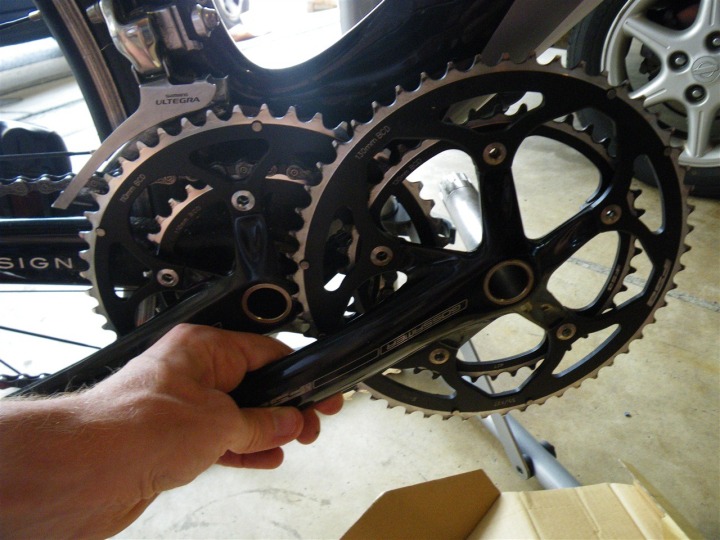
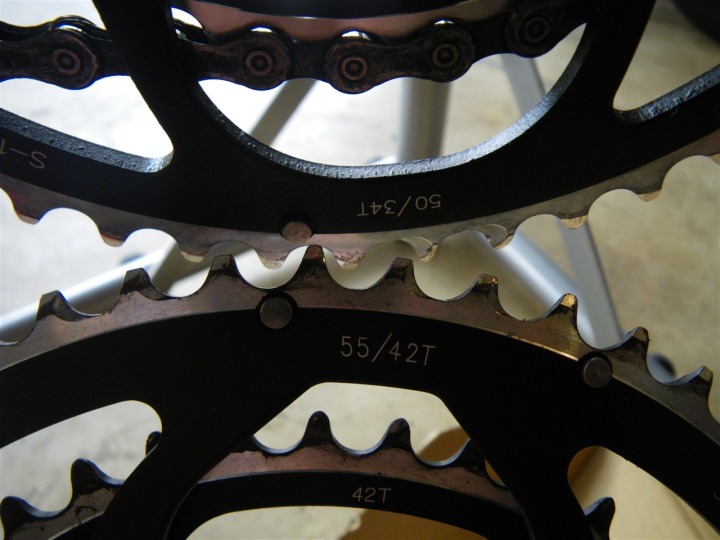
All of that though first first hinged on my ability to get my bike off my car. For some weird-ass-reason the lock wouldn’t unlock. It took over 30 minutes of tinkering it before it finally came lose. Well, that and a good bunch of sunscreen squirted in there, in hopes it would act like WD40 (which it did).
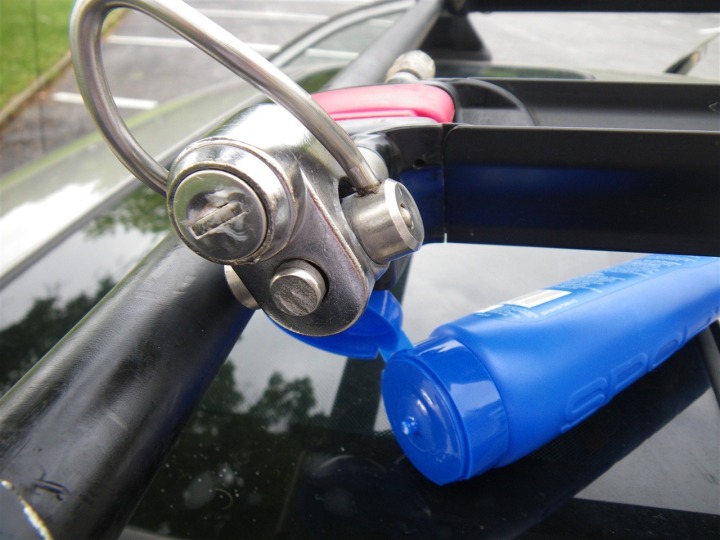
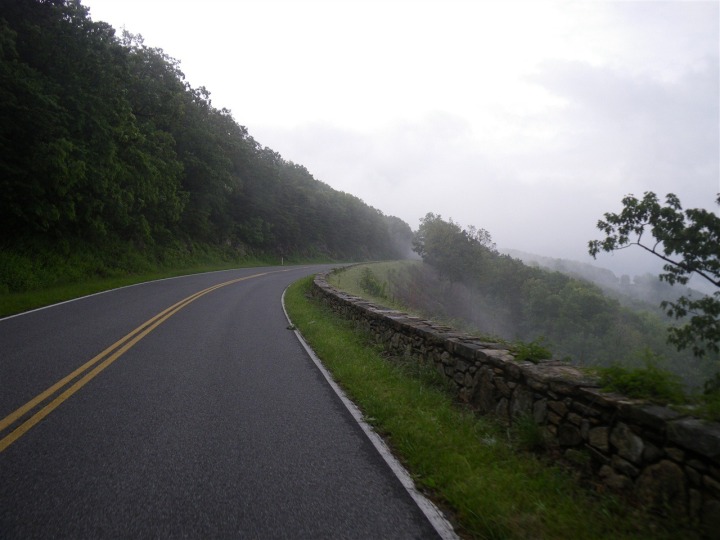
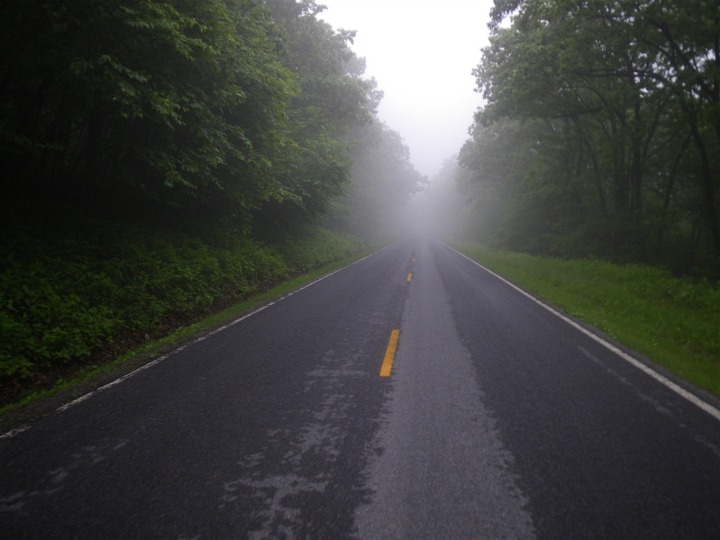
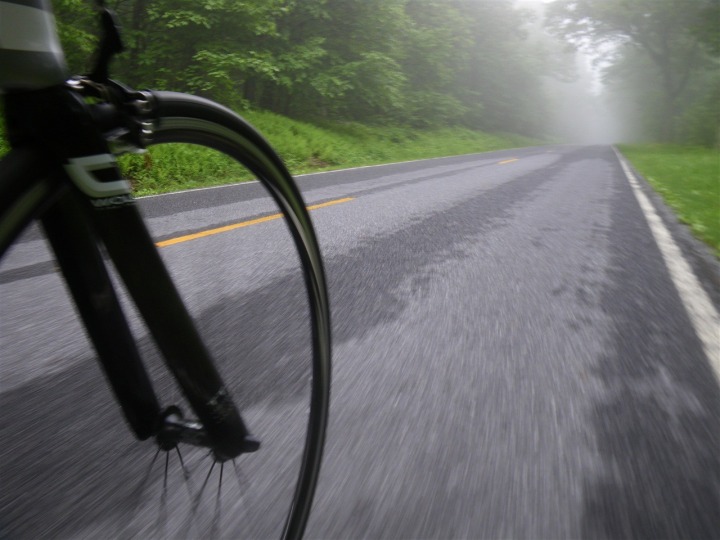
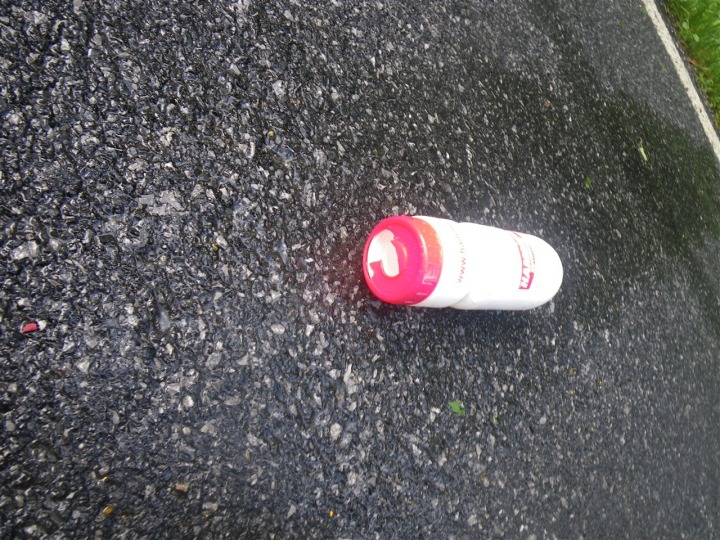
So how were the compact cranks fairing with the first few hours of climbing? Well…pretty damn well. Here’s the first two points I usually measure at on my rides, comparing against my last Skyline ride two weeks prior.
| Section | Two Weeks ago | This week | Savings |
| Visitor center to Elkwallow | 1:19:30 | 1:14:30 | 5:00 |
| Visitor center to Tunnel | 1:45:20 | 1:40:14 | 5:06 |
So, in this case we see about a 5 minute savings through the first portion, and a tiny bit extra on the next portion. So that’s a massive savings on the first piece, but why only a smaller savings on the next piece? Well, mostly cause it’s flats – where compacts aren’t going to save you much (if any). Here’s the profile up until that point, with the two dots being each of the two points above:
Cadence-wise, here’s what that picture looked like – both weeks were equal in low Zone 2:
| Section | Two Weeks ago | This week | Savings |
| Start to Elkwallow | 88 | 93 | + 5 RPM |
| Start to Tunnel | 90 | 94 | + 4 RPM |
Again, you see the same pattern of savings – a huge jump in RPM. And again comparatively on the flats where I maintain a higher cadence anyway, the savings is smaller (but still there). This is also why going compact for something like Ironman Florida wouldn’t make much sense (super-flat course).
Anyway, onto the rest of the ride. The sun eventually came out (that’s my awesome new jersey I picked up in Rome last week, Team Liquigas):
Once I reached the turnaround point the real fun began. Actually first, at the turnaround point I met up with two other athletes that Coach Alan coaches (out of a very small group he coaches overall), given we’re on much the same training schedules for the same races, we see each other a bit. We ended up riding nearby each other for a bit. We’d be about the same on descents and flats, but climbs were all mine. Along the flats we were keeping solid spacing to avoid drafting – no point in drafting in training for non-draft legal races, as you only cheat yourself.
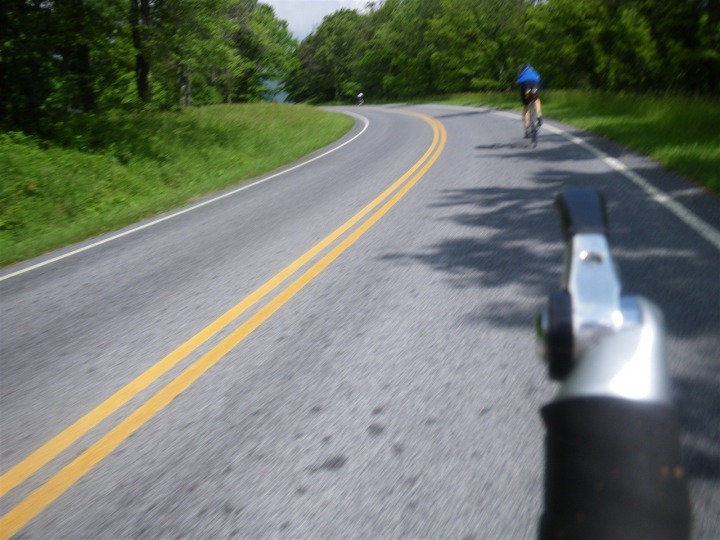
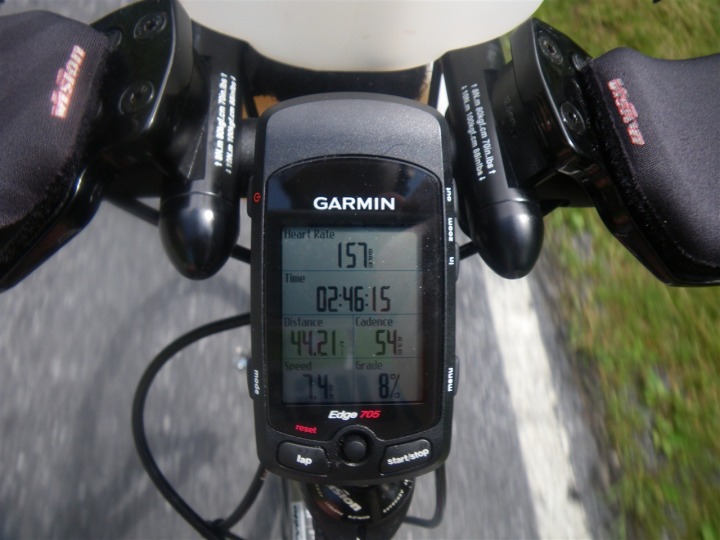
After that climb was complete I had about two miles to recovery before the next and final bit of fun began. Now I got to go Z4A for about 12 miles (including a number of miles of climbing). So essentially, it was like a time-trial of sorts…in the mountains. Awesome! His goal here was to condition my body to going hard even though it was tired (towards the end). Essentially, going hard longer (how else would you do it?). I had a blast though on it.
Before I knew it, I was done. My overall time was incredibly fast compared to last time. While I went 6 miles longer (three miles of which were 7% climbs), my time was only 15 minutes longer. Which means I saved a crap-ton of time (technical term).
Enough time to warrant stopping for ice cream.
Which begs the question – what exactly are “Wet Nuts”? Just wondering.

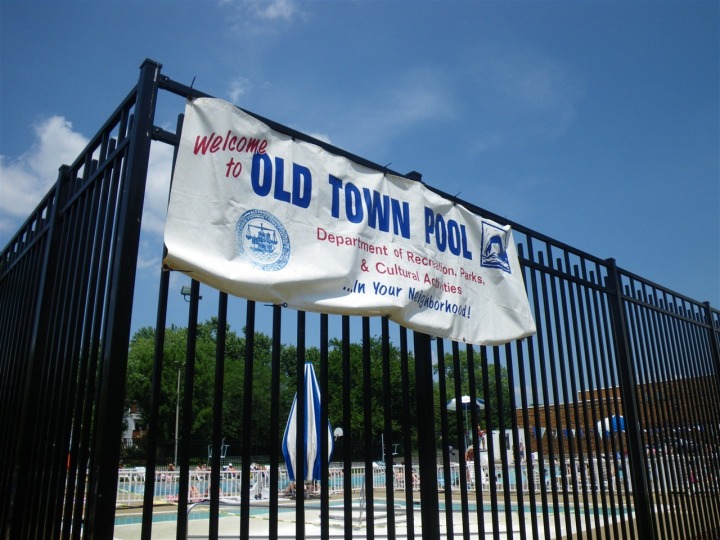
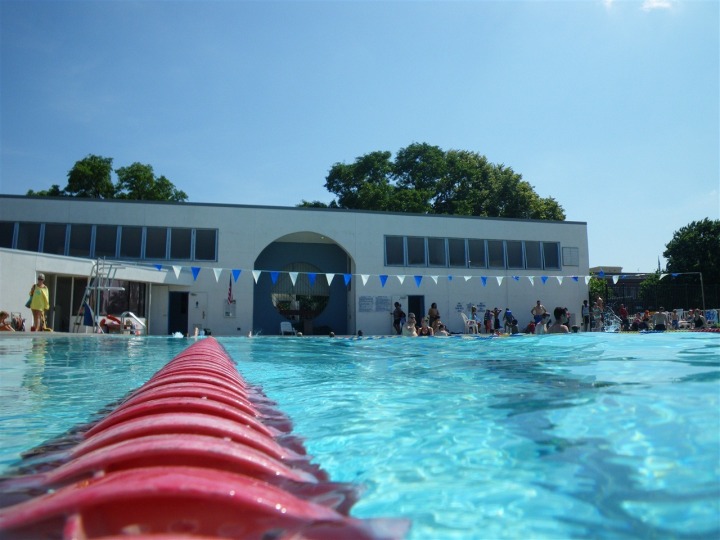
FOUND THIS POST USEFUL? SUPPORT THE SITE!
Hopefully, you found this post useful. The website is really a labor of love, so please consider becoming a DC RAINMAKER Supporter. This gets you an ad-free experience, and access to our (mostly) bi-monthly behind-the-scenes video series of “Shed Talkin’”.
Support DCRainMaker - Shop on Amazon
Otherwise, perhaps consider using the below link if shopping on Amazon. As an Amazon Associate, I earn from qualifying purchases. It doesn’t cost you anything extra, but your purchases help support this website a lot. It could simply be buying toilet paper, or this pizza oven we use and love.


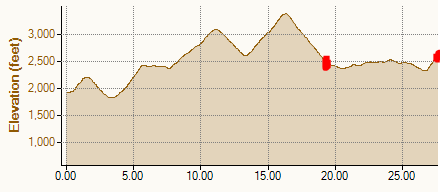
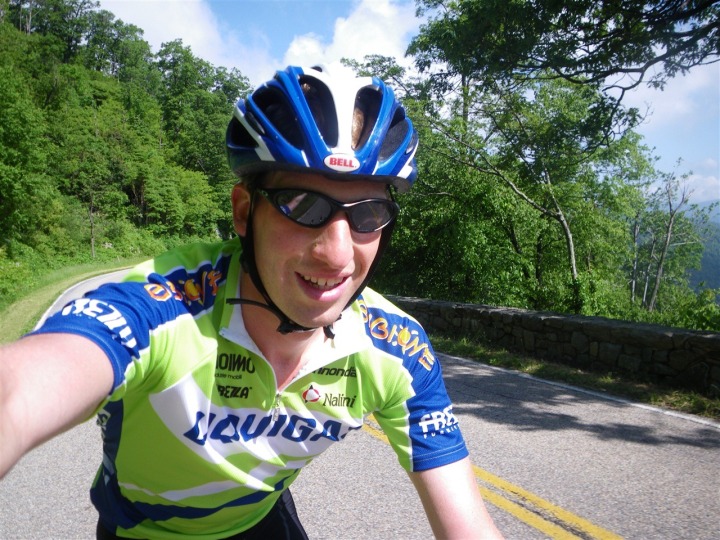
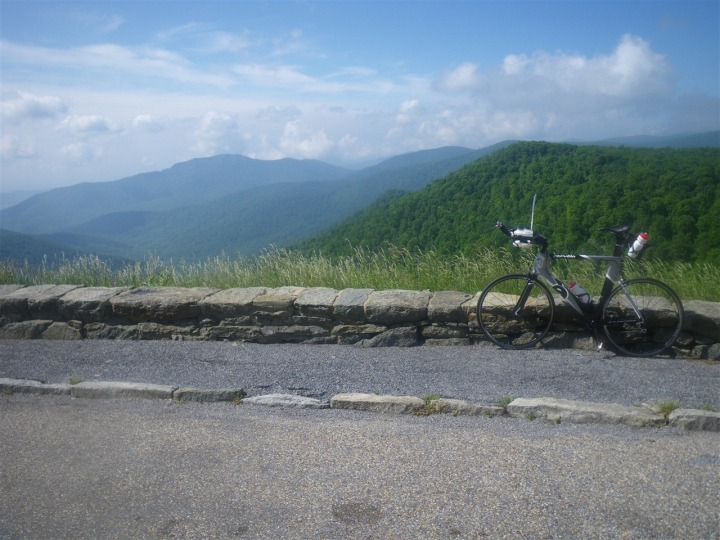


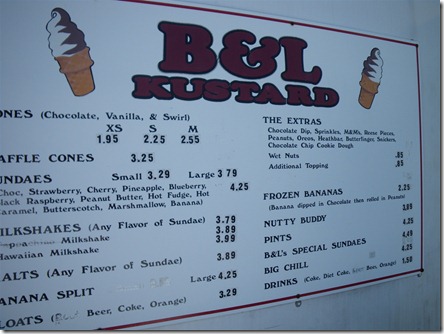






















Wet Nuts:
link to recipezaar.com
Great to hear your new crankset is working for you! The first thing I did when I got my bike was swapped out my double for a compact, and I love it. The only thing is I sometimes don’t have high enough gearing for the steeper downhills.
How great to adjust your gear to augment what you’re already are super at. Will you leave the compact on until after IM Canada or do you have to keep switching it off and on?
How was the water at the Old Towne Poop–I mean Pool.
Great work outs over the weekend.
5 minute improvement for a fellow as speedy as you on that stretch – that’s HUGE!
You are assembling choice weaponry.
Where do you usually ride from on Skyline? Been wondering where the best places are to park/ride.
Lazy – The pool was really really cold, but otherwise quite nice. Water clarity was actually the cleanest I’ve seen it.
DCmidnight-
I usually start at Dickey Ridge (mile 4.5) and then continue along the drive. Then at the end, I go all the way down to the entrance (mile .3ish), and then ride back up the 4 miles or so to the visitor center (Dickey Ridge). The reason I switched from last year’s start at the bottom is that this give you a good place to fill bottles and access a bathroom – which the park entrance lacks.
Funny that you commented on my blog that you miss the Northwest.. I actually grew up in the DC area (Northern VA). Where is Skyline??
I wasn’t into cycling back then, but it looks like I should have been–some beautiful scenery!
Thanks.
I’ve read your Garmin 705 review a few times and being a longtime user of the 305 (marathon training) I’m still debating over getting the 705 for biking. I’ve always used SportTracks but still wonder if its worth the cost to add the 705.
Yes, I actually have a compact crank on my road bike and a regular one on my tri bike, which is one of the reasons why I go with the road bike on a hilly course.
But I do think drafting can be very useful in training for those who are looking to get faster. I refused the draft the first year I started riding thinking it’d set me back as a triathlete. The second year my husband convinced me I needed to do it in order to get faster and I made huge gains in speed and riding confidence. Now maybe he wishes he didn’t tell me that 😉
Kustard with a “K” and Wet Nuts. ROTFL!!! Way too many inappropriate jokes there.
I don’t think I can justify the compact cranks for the flat course at IM Cozumel. Interesting data though.
i do like this blog header! that’s pretty sweet about the crank providing so much time saving. well, plus you’re sic fit. 🙂 welcome home!
wet nuts???? hummmm let me think about that…..
Love your cycling shirt…..very cool
Do you think any part of the increase in cadence could be because you area aware you have a compact crank right now and the theory that you should be spinning faster because of having a compact crank?
anyway, I love mine right now but I lose a bunch with our A group trying to keep up with them on flats and downhills.
I just switched over to a compact too 🙂 Our bikes match, minus the cool HED wheels. One day… 🙂
That’s awesome that you made such a significant gain with the compact double. I’m very happy that I went that route on my newly built up bike. Between the 500 ft climb home from work every day and the general Washington State terrain it seemed like a no brainer.
What a great blog!
I know this is a stale post, but I wanted to comment as I’ve just got a new bike with a compact, and I spent quite a bit of time thinking about standard v compact. In short, the selection of the rear cassette matters as much as the front crank in determining your available gear ratios.
Most standard crank bikes seem to come with a cassette whose smallest cog is 12 teeth. The compacts often come with an 11 tooth small cog. As a result, the biggest gear ratio on a standard crank is often 4.42 (53/12). The biggest compact crank gear is usually 4.55 (50/11). That’s right, on a new bike, the compact often has a bigger gear. Of course, if you spec your own components, you can do standard with an 11 tooth cog for a big gear of 4.82. If you just slap a compact on your existing cog, all your gears on the dinner plate are going down about 6% (50/53).
On the small side, the compact will always have a smaller gear as the 34 tooth salad plate is smaller than the 39 on a standard. In fact, its 13% smaller, so my 11/28 has a 1.21 minimum gear ratio with the compact. I’ve got to spin fast in that gear to avoid falling over sideways. (90 cadence is less than 8.5 mph.)
Overall, the compact will give you a wider set of gears than a standard because the front ratio is bigger. (50/34=1.47 v 53/39=1.36) You’ll be 6% smaller on the high gear and 13% smaller on the low gear for a given cassette. This can be even more beneficial is your rear cassette is a “straight block”, i.e. nothing over 23 teeth or so, and you want to do some hills.
One other thing. With a compact, your chain and deraileur must be adjusted properly as the larger difference between the two chainrings in front means less tolerance for chain slack.
Hi Anon!
Thanks for the comments!
Awesome write-up you posted on the details of the cog ratio’s, I’ve started to toy around a bit with some of the calculators some to understand it more, but you really helped to nail it all down in one comment (well, two comments). 😉
Thanks again! And thanks for stopping by!
I also ordered a compact crank because I am much more effective when I can keep a high cadence climbing.
However, I am now afraid to spin out on the downhill sections.
How big is your smallest cog: 11 or 12 teeth? Can you comment on your experience going downhill since the crank exchange?
Thanks in advance!
Just reading this old post. Out of curiosity, what cassette did you use with your compact crank?
A “crap-ton”! I love it.
It’s an interesting article Ray as I’m a cyclist only who has been using compacts only and my coach advised me to go big as I’m a big guy (6’4″ and 100kg or 220lbs) and said that my pistons would be more efficient with a bigger diameter. He was right but geez Louise it hurt a crap-ton.
Great article. Newly converted DC Rainmaker follower. Found your site researching a cyclo comp for me and watch for the wife who is doing the 2024 NY marathon in a couple of months. Long flight from Australia but it will be worth it.
Fwiw, we got a forerunner 220 and an edge 510.
Bugger, that was meant to be 2014 marathon. You know what I mean.
Awesome, happy to help! NY should indeed be fun – I haven’t raced it yet, one of the few ‘big city’ marathon’s I’ve yet to do, but hear good things about it (at least, once you get to the start line). Tell you’re wife to enjoy!
Hi,
I am trying to fit a compact chainset onto my p2c also!
I can’t seem to get the derailleur low enough to avoid rub.
LBS has same problem.
Did you run into this?
Best,
Josh